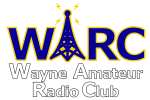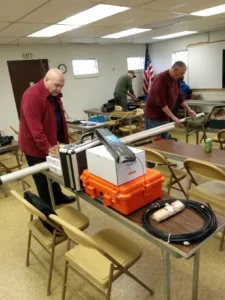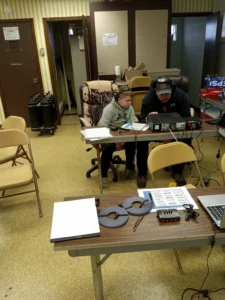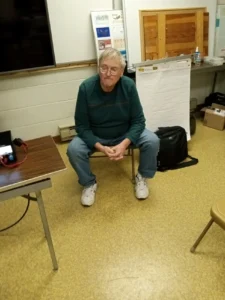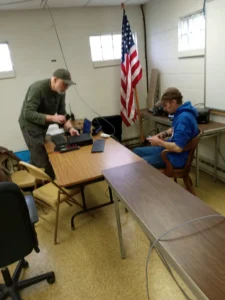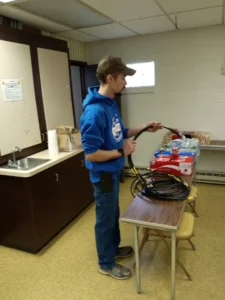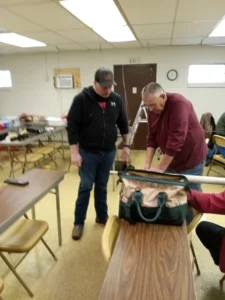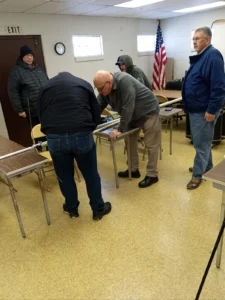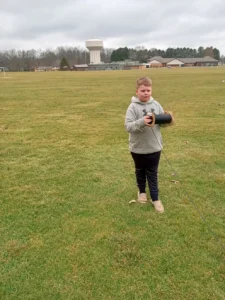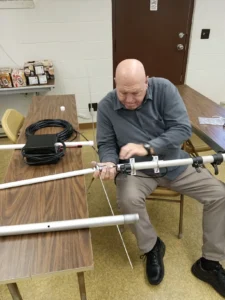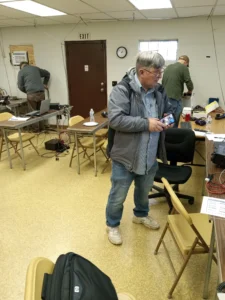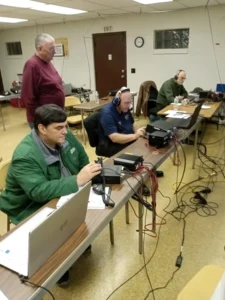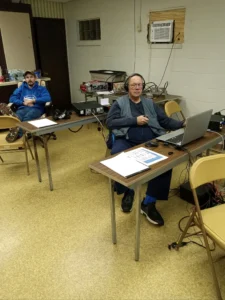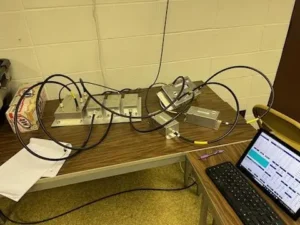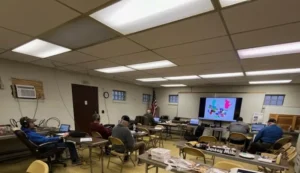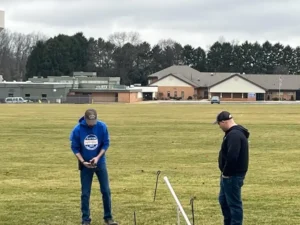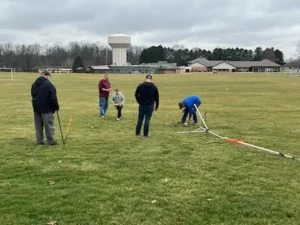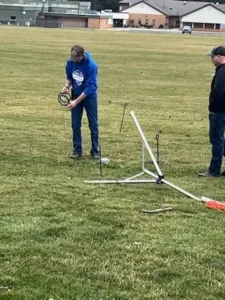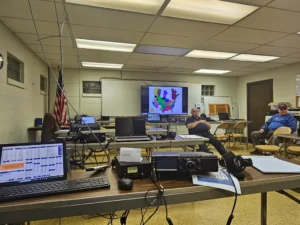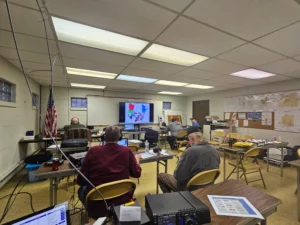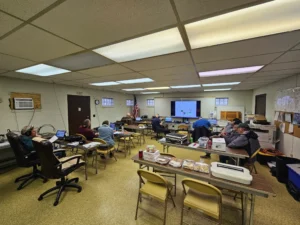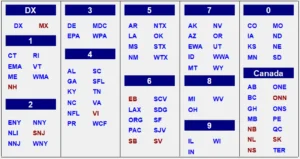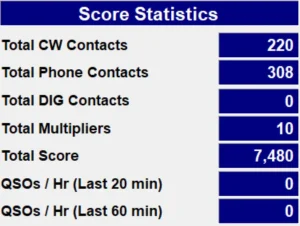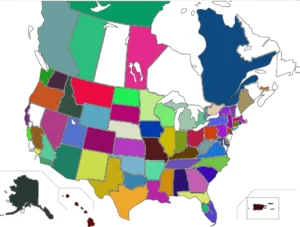Wayne Amateur Radio Club participated in Winter Field Day and it was a huge success. We made improvements to or station setup, made contacts all across the world, spent time with our fellow hams, and even got to meet new guests while we were operating. A BIG thank you to the Silver Creek Amateur Radio Association for loaning us their 10/15/20 meter triplexer and 10/15 band pass filters. Having these to add to our existing triplexer and filters allowed us to operate 5 bands (and 5 radios) which really improved our success. Below you will find a summary of our event.
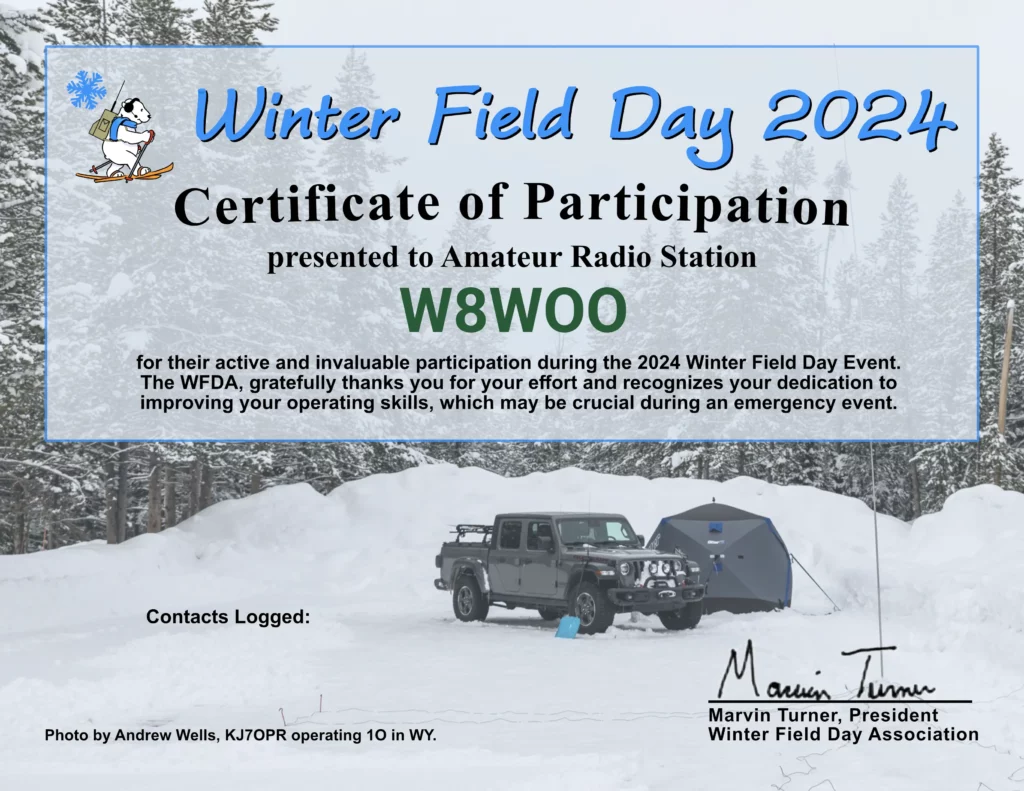
Antenna System
Antenna Mast
This year we made several improvements to our antenna system. Previously, we attached the off center fed dipole to the mast, stood it vertically while collapsed, then extended each section of the mast. Once fully extended we attached the guy wires. This proved to be somewhat difficult with the weight of the antenna and having to support the fiberglass mast with no guy wires installed yet. This year, we chose to mount a pulley to the top of the mast, fully extended it while on the ground horizontally, tilt it vertically then secured the mast with the guy wires. After this, we then pulled the antenna up with the pulley and rope. This was much easier, quicker, and probably even safer not having to use a ladder.
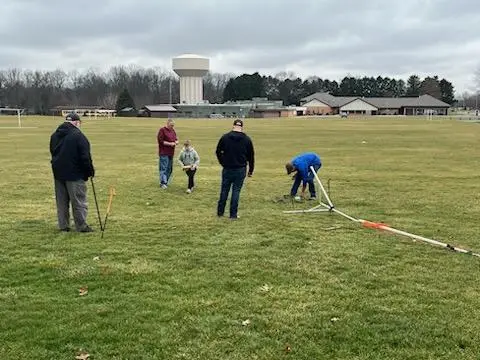
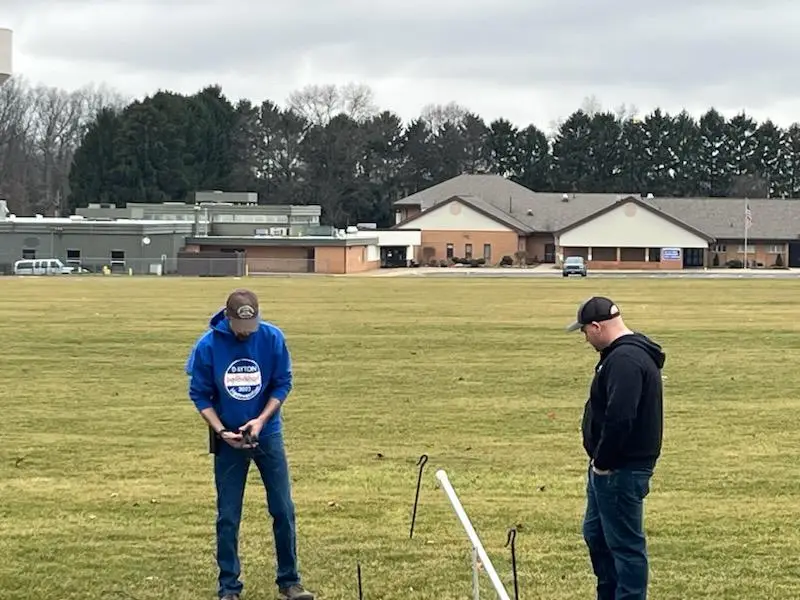
Antenna
Similar to previous years we used a single off center fed dipole. This year though, we tried out Palomar Engineers 80-6 off center fed dipole. The feed point is offset in a different location, fed with a 1:1 choke as well as a 4:1 balun. We felt that this antenna not only worked better than the previous antenna but having the 1:1 choke seemed to improve any issues we had with RFI getting into the computers. SWR was acceptable across all the bands we worked with the exception of the upper portion of 75 meters.
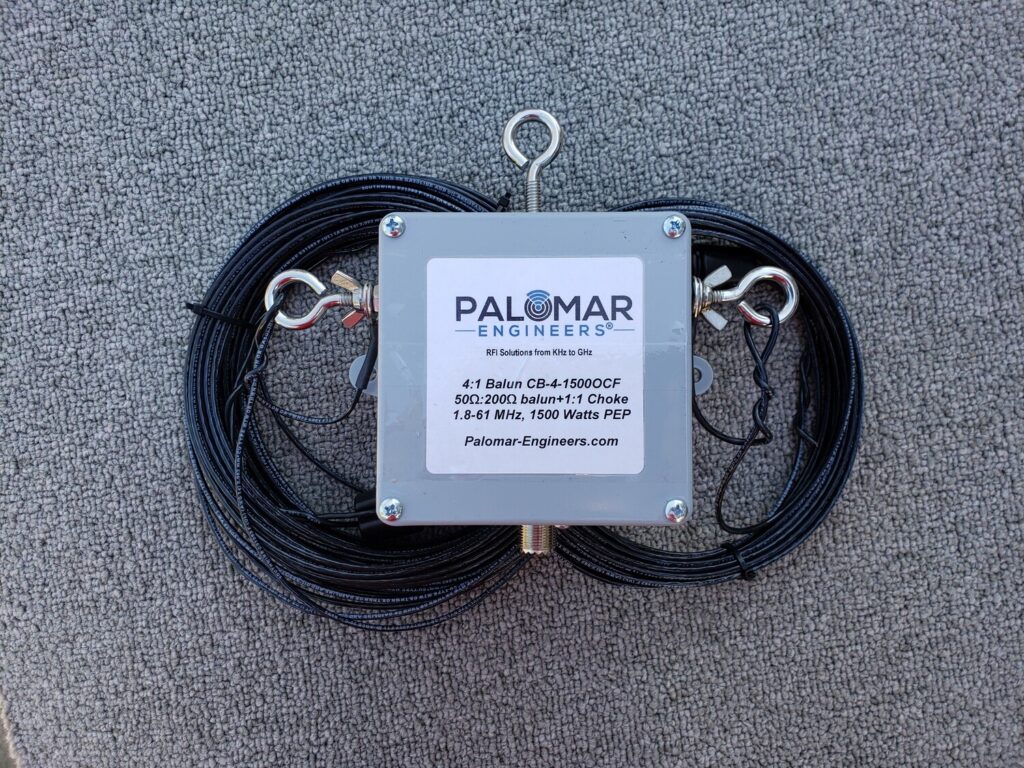
Triplexers and Filters
Another improvement we made which played a big part in our success was adding 10 and 15 meters to the bands we could operate. We are very thankful for Silver Creek Amateur Radio Association loaning us their 10/15/20 meter triplexer as well as their 10 and 15 meter band pass filters. Adding these to our existing filters/triplexer enabled us to run 5 radios simultaneously on 5 bands.
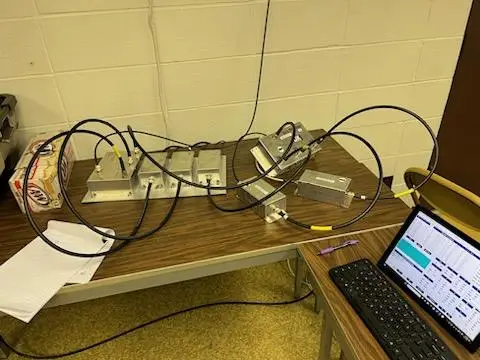
Stations
There wasn’t any significant changes to how we ran the stations this year with the exception of adding 2 stations for a total of 5. We again chose to use N3FJP Winter Field Day logger which is very simple to use as well as interface the radios with. All 5 computers were networked so we were able to log all contacts to a single log. This also allowed us to monitor our progress easily with sections worked and total contacts. We operated with a Yaesu FT710, two Icom 7100 and two Icom 7300.
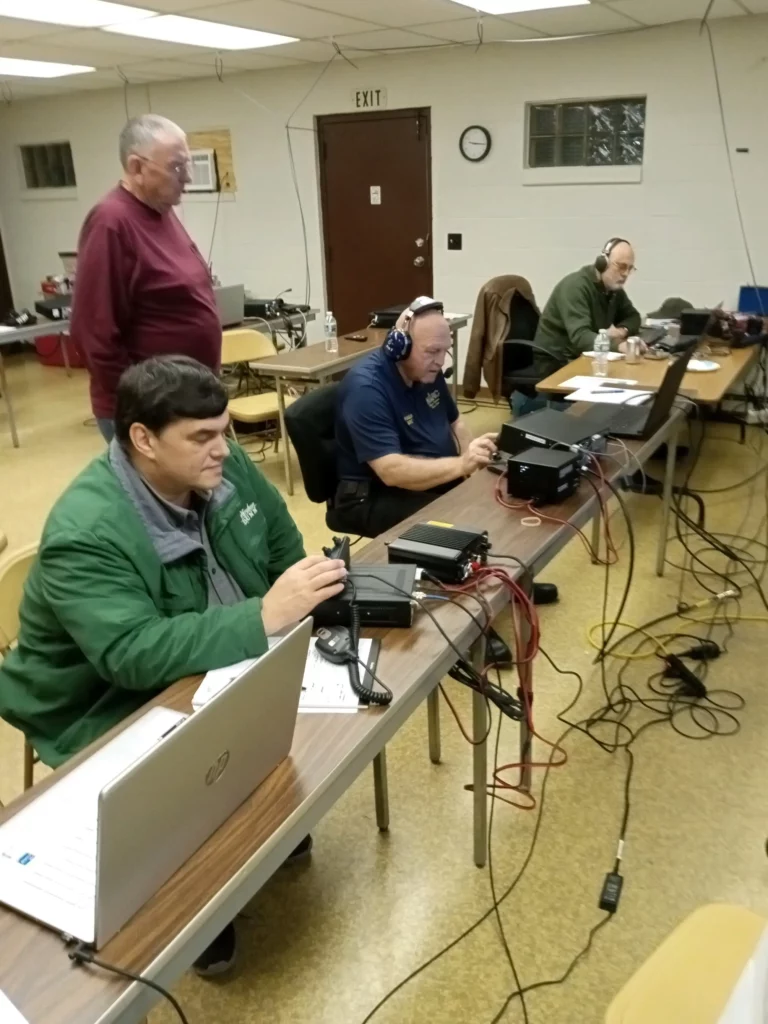
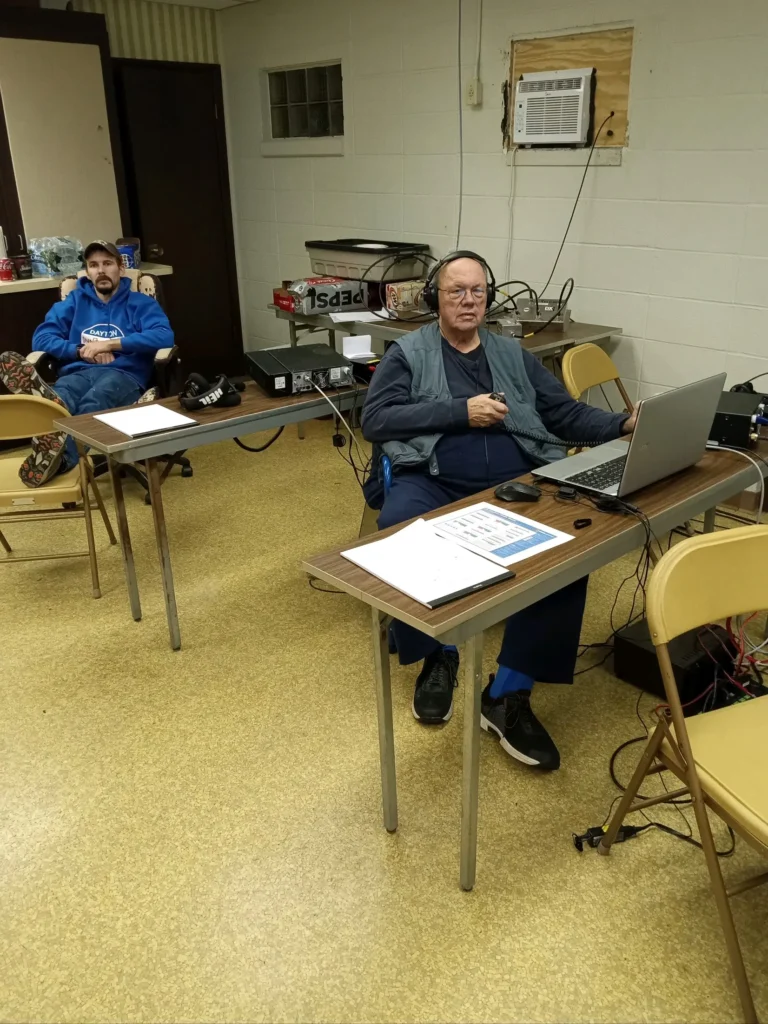
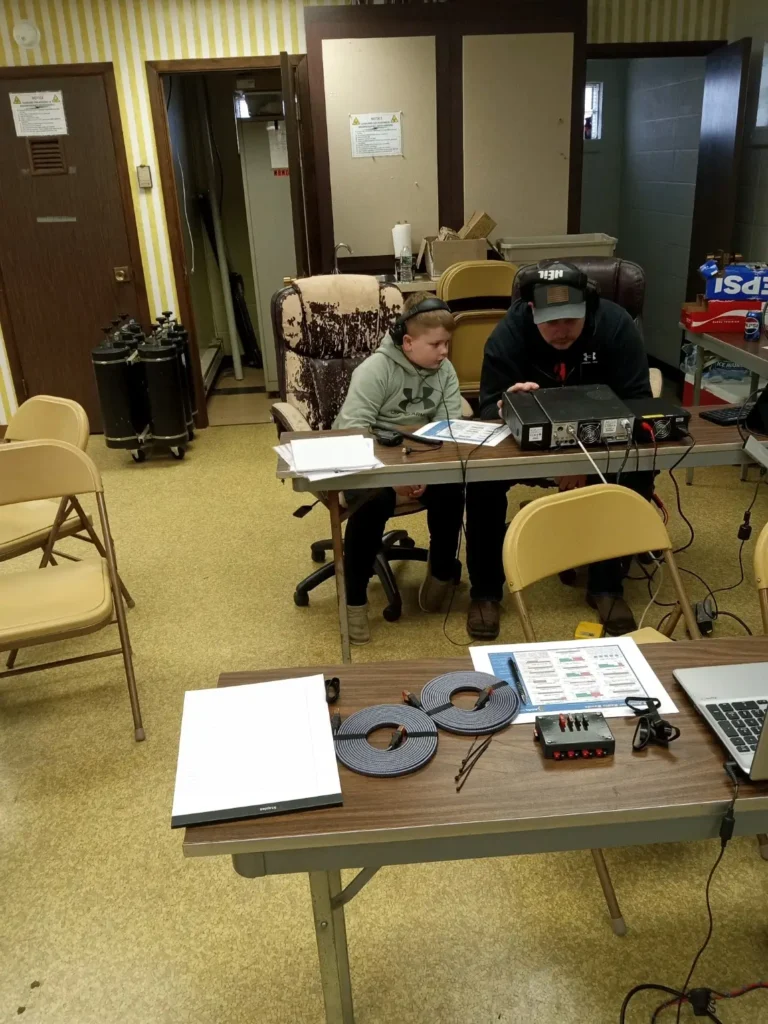
Stats
Our total claimed score for the event was 7,480 points which is a huge improvement over the last several years. We were able to work all but one state as well as working 9 Canadian sections. Our faithful CW operator, KT8Z, made sure to make contacts on all 5 bands to increase our multipliers to 10. In the future, we hope to include digital in our operation which would greatly increase our score and total multipliers.
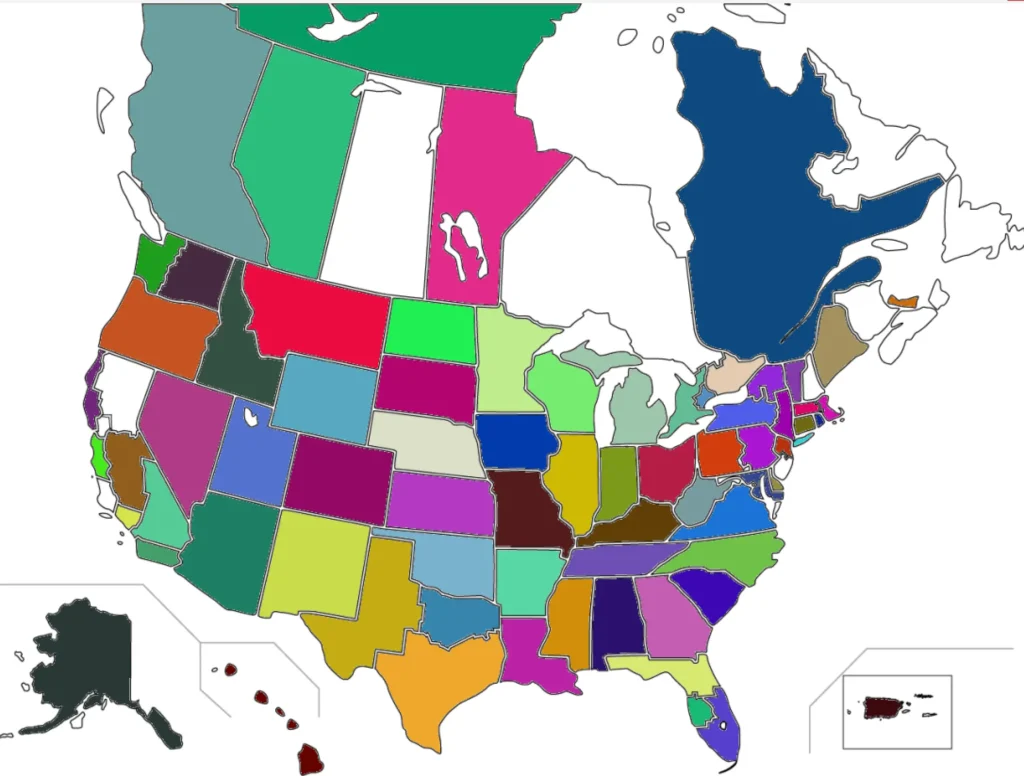
Total Contacts by Band and Mode
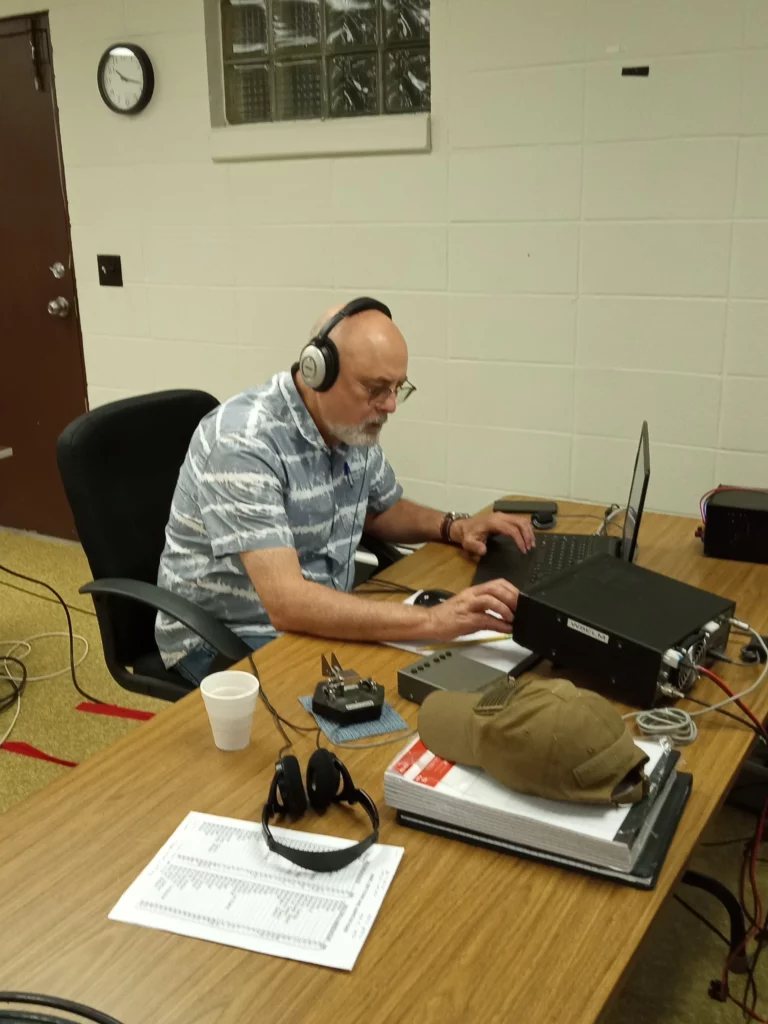
| Band | CW | Phone | Digital | Total |
| 80 | 33 | 26 | 0 | 11 |
| 40 | 156 | 93 | 0 | 249 |
| 20 | 13 | 68 | 0 | 81 |
| 15 | 17 | 65 | 82 | 16 |
| 10 | 1 | 56 | 0 | 57 |
| Total | 220 | 308 | 0 | 528 |
Thank you to everyone that helped make this a success. Whether you operated, setup, tore down, brought food, or came for moral support, Field Day wouldn’t have been the same without your involvement. For those that were unable to attend, make sure to stop in during ARRL Field Day this summer.
